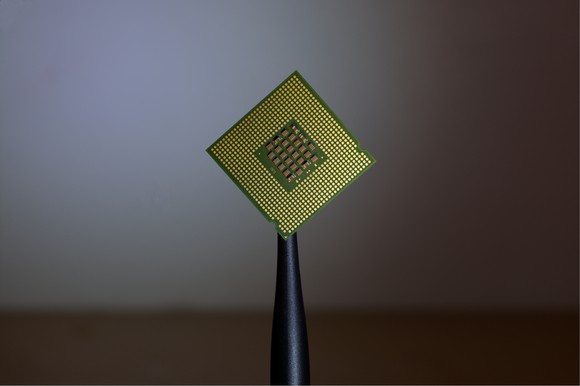Are you familiar with the Rule of 72? It’s the number of years it takes to double your investment in a stock based on a specific percentage return.
For example, Montreal-based IT services provider CGI Group (TSX:GIB.A)(NYSE:GIB) has a five-year annualized total return of 19.3% through January 9. Divide that into 72 and you get 3.75, which means CGI stock doubled in fewer than four years.
How good is that?
The S&P/TSX Composite Index had a five-year annualized total return of 4.73, which means if it were to continue at that pace, it would take slightly more than 15 years for the value of the index to double.
So, yes, it’s very good.
If you’re lucky enough to be a CGI shareholder and have held its stock for the past four years, give yourself a pat on the back. If you haven’t owned CGI stock before, here are three reasons why it ought to be in your portfolio.
It’s listed in the U.S.
Except for the currency issue, I don’t understand why international companies like CGI dual list. The cost is redundant, in my opinion.
On December 14, CGI celebrated 20 years on the NYSE. Since joining the exchange, CGI has seen its revenues grow 15-fold and its earnings by a factor of 30.
Founded in 1976, CGI has grown to become the largest IT services provider and consultant in the world. Institutional investors don’t have a problem beating a path to its door despite being based in Quebec.
Twenty years ago, when it was a much smaller company, CGI looked at the bigger picture and realized that if it wanted to become a world leader in its field, its stock needed to be listed on a bigger stage.
Ever since this big decision in 1976, it’s dreamed big. That’s the hallmark of a growing company.
Strong financials
In December, Fool contributor Karen Thomas laid out her argument why CGI ought to be in your portfolio. High atop her list of reasons was the company’s solid EBIT margins, which were 14.8% in the latest quarter, 60% higher than in 2009.
A month earlier, I’d harped about the same thing, suggesting that CGI’s free cash flow generation made it an excellent stock to own. In 2018, CGI grew free cash flow by 12% to $1.3 billion.
Paying no dividend, CGI uses the free cash flow to pay down debt, repurchase shares, and make acquisitions. In 2019, CGI is focusing its capital allocation on share repurchases rather than debt repayment.
Given the company finished fiscal 2018 with net debt of $1.6 billion, or just 19% of its capitalization, and free cash flow at record levels, I think it makes sense to bring down the share count.
Despite the performance of its stock in 2018 — it was up 22% for the year, giving it a decade of calendar gains — CGI’s stock still trades at a reasonable 18 times its 2019 earnings.
Tuck-in acquisitions
While CGI needs to improve its organic growth, there are very few companies that make and integrate acquisitions as well as CGI does. It made three in 2018 that cost the company $277 million.
It has an uncanny ability to buy small- and medium-sized IT businesses and integrate them into CGI without losing its shirt.
“The organic growth rate is fairly tepid at between one and 3%,” Brian Madden, senior vice president and portfolio manager at Goodreid, told BNN Bloomberg recently. “[But] that has been accelerating recently and their tuck-in strategy has also been working nicely, where they buy niche companies to add capabilities or to fill in a geographic void, and that’s helping to bolster their organic growth.”
Successful businesses like CGI turn over every rock in search of ideas, businesses, strategies — anything to grow organically. And when you’re not doing it using internal sources, acquisitions can be a way to get a business unstuck.
I continue to like this Canadian tech stock that gets no respect.

 Don't let our Poutine Day offer get cold: 65% off Stock Advisor ends at midnight!
Don't let our Poutine Day offer get cold: 65% off Stock Advisor ends at midnight!








